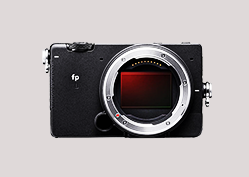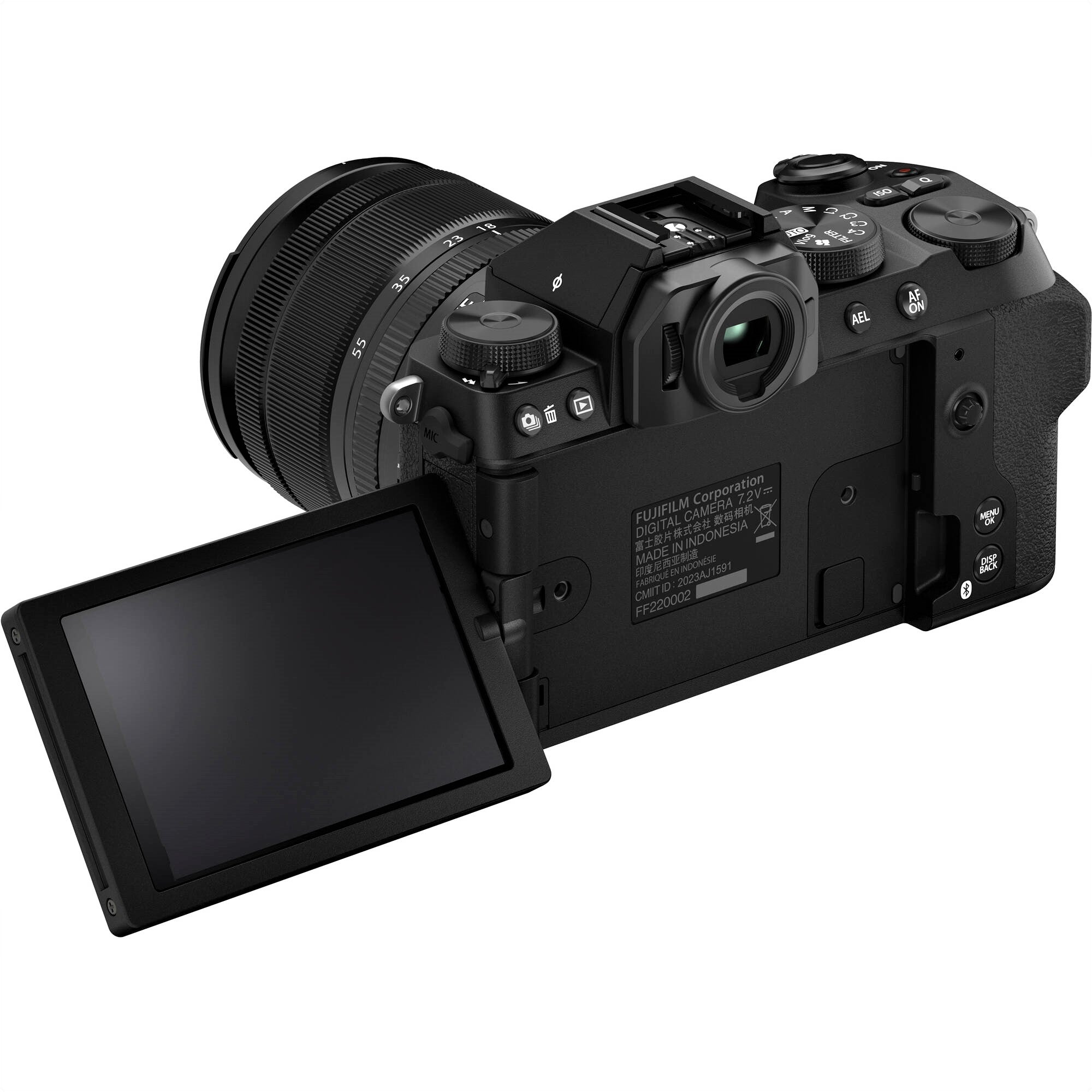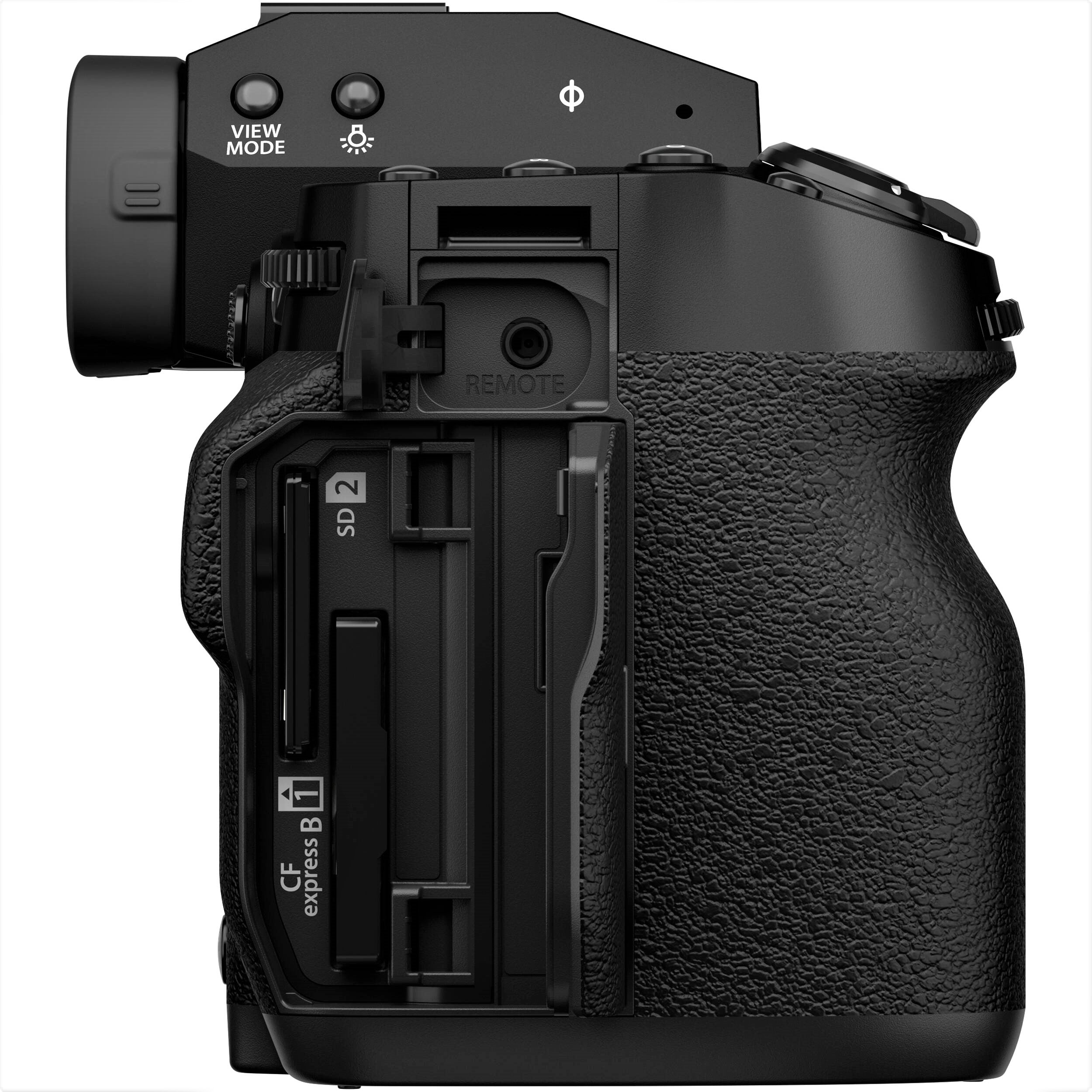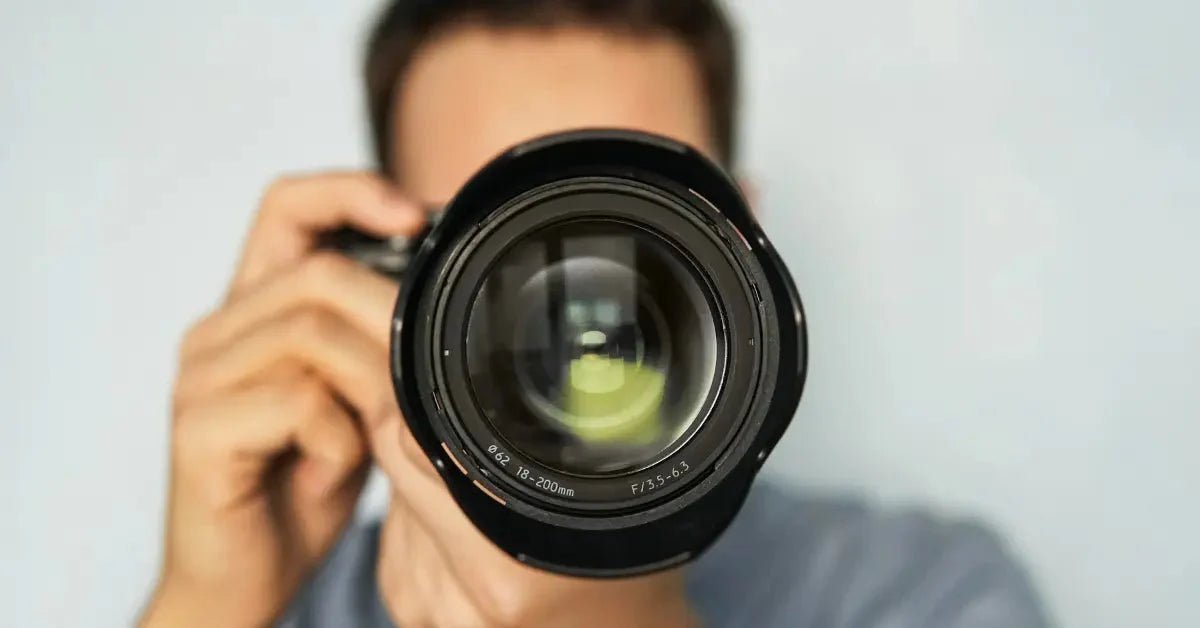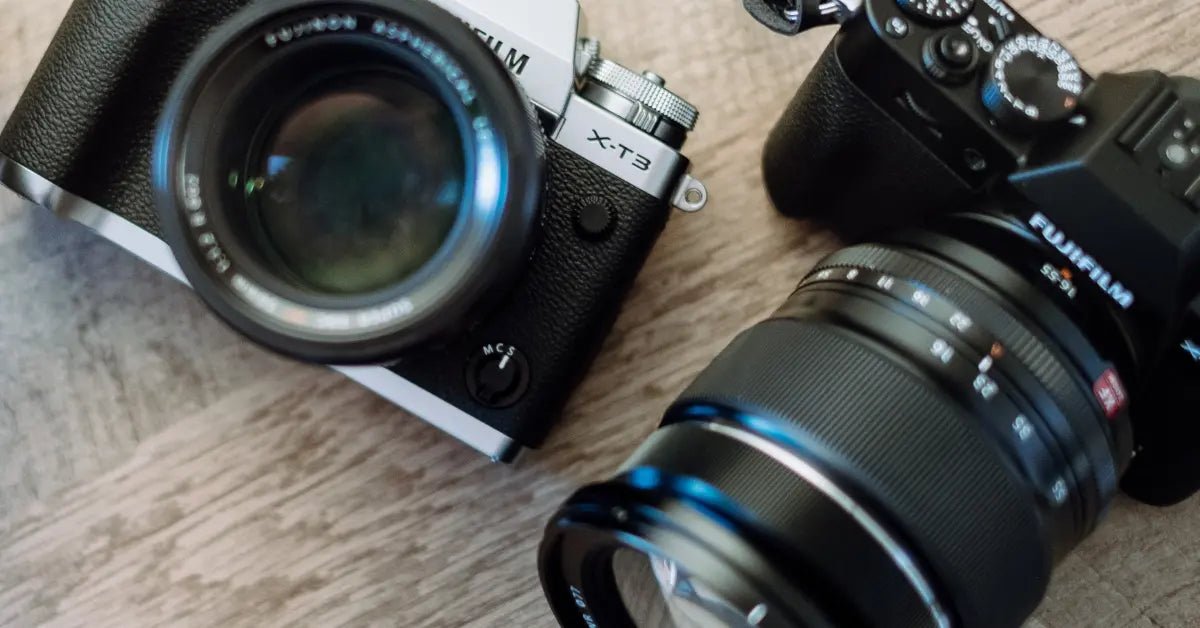You're capturing life's moments through a lens that mirrors your own vision—clear, detailed, and vibrant. That's the magic of a full frame camera. As we dive into 2024, the world of photography keeps pushing boundaries, and full frame cameras are right at the forefront.
They're the go-to for both pros snapping that perfect shot under challenging conditions and serious enthusiasts aiming for that professional edge.
In this post, we're going deep into the realm of the best full frame cameras hitting the shelves in 2024. We'll unpack their standout features, top-tier performance, and what makes them tick in a world brimming with tech options.
Whether you're thinking about upgrading your current set-up or venturing into professional photography for the first time, stick with us. We’re here to guide you through the maze of choices to find that perfect full frame camera that feels like it was made just for you.
What does "full-frame" mean in a camera?

In photography, when we say a camera is "full-frame," it means its sensor is about the same size as a traditional 35mm film frame, which is roughly 36mm by 24mm. This makes it larger than what you'd find in most digital cameras today, which typically use smaller "crop sensors."
The full-frame sensor captures more of the scene in front of the lens, offering broader view and generally better image quality, especially in low light. This size difference is a key factor in how your photos look and feel, affecting everything from the depth of field to the overall sharpness and color depth of your images.
Why Choose a Full Frame Camera?

Full frame cameras rock a bigger image sensor that matches the size of traditional 35mm film—yep, like the old-school film cameras. This beefier size brings a bunch of cool perks.
For starters, they're awesome in low-light situations, allowing you to capture clearer and sharper images when the lighting isn't great, without cranking up the graininess or noise.
They also pack a wider dynamic range, meaning they can handle scenes with a mix of very bright and very dark areas better, capturing more details in both.
Plus, they offer a shallower depth of field, which is perfect for those creamy, blurred backgrounds that make your subject pop—super handy for portrait and landscape photographers or anyone looking to add that professional polish to their shots.
Whether you're shooting a starry night, a bustling cityscape at dusk, or just your friend in a candlelit café, full frame cameras give you that extra edge.
Best Full Frame Cameras in 2024
Sony Alpha A7R V

Features: The Sony Alpha A7R V isn't just another camera—it's a beast with a whopping 61-megapixel sensor that captures images with jaw-dropping clarity and insane detail. It's like having a superhero's vision! Plus, it's decked out with some seriously smart tech. The AI-driven autofocus is like having a co-pilot who's always on point, making sure your shots are sharp, while the robust image stabilization keeps everything smooth, even if you’re on the move or shooting in shaky situations.
Performance: This camera is a speed demon. Whether you’re shooting a model in a controlled studio environment or capturing the chaotic beauty of a windy cliffside landscape, the A7R V handles it like a champ. Its processing speed is lightning-fast, so you can trust it to keep up with the action without missing a beat, and the high-resolution output means your photos look epic, full of life and color.
Why It Stands Out: Here’s where the A7R V really shines—it’s got this advanced real-time tracking and eye autofocus system that's a total game-changer. Whether you're focusing on people or animals, this camera locks onto your subjects with incredible precision, making it a favorite tool among wildlife and portrait photographers. It’s like it knows exactly what you want to capture, helping you nail those dynamic shots with confidence.
Canon EOS R5

Features: The Canon EOS R5 isn't just any camera; it's a true hybrid powerhouse that excels in both stills and video. Packing a 45-megapixel sensor, this camera brings your photos to life with stunning detail and clarity. But where it really shines is video — it's one of the few cameras out there that can capture 8K video, opening up a world of ultra-high-definition filmmaking for both professionals and enthusiasts. Whether you're snapping detailed portraits or shooting cinematic video, the R5 has you covered.
Performance: When it comes to autofocus, the Canon EOS R5 is a beast. It's equipped with one of the most advanced autofocus systems around, covering 100% of the frame with 1,053 autofocus areas. This means the camera can latch onto subjects almost anywhere in the frame, making it super reliable whether you’re capturing a sprinter in full flight or a bird in distant flight. This wide coverage and high density of AF points ensure sharp focus in virtually any shooting scenario.
Why It Stands Out: The R5 really sets itself apart with its in-body image stabilization (IBIS) system, which offers up to eight stops of correction. This is a major plus if you're shooting handheld, especially in challenging light conditions or when using slower shutter speeds. This level of stabilization allows you to shoot in low-light settings without the blur, reducing the need for a tripod and making it easier to capture crisp images on the go. It’s a game-changer for photographers and videographers who need the freedom to shoot handheld in varied lighting conditions.
Nikon Z7 II

Features: The Nikon Z7 II is packed with a whopping 45.7-megapixel sensor and not one, but two EXPEED 6 processors. This dynamic duo delivers stunningly detailed images and snappy processing speeds, making this camera a dream for anyone who needs to capture action as it unfolds, like at sports events or in wildlife photography.
Performance: When it comes to video, the Z7 II really shines. It supports 10-bit N-Log and HLG (Hybrid Log-Gamma), giving videographers the tools to create cinema-quality footage with richer colors and greater tonal range. This makes it a go-to choice for filmmakers and content creators looking to elevate their video work.
Why It Stands Out: Beyond its impressive specs, the Nikon Z7 II has made some significant upgrades over its predecessor. It boasts a larger buffer capacity, which means you can shoot more images in quick succession without slowing down. Plus, it features dual card slots, adding a layer of reliability and flexibility to file management. This is a huge boon for professionals who can't afford to lose a single shot during crucial moments, and it also makes life easier by streamlining the backup process and allowing more space for those high-resolution files.
Panasonic Lumix S1R

Features: The Lumix S1R is pretty impressive when it comes to specs. It boasts a 47.3-megapixel sensor that captures incredible detail in every shot. But here’s the kicker—it also has a high-resolution mode that can churn out massive 187-megapixel images. This means your photos come out super sharp, whether you're zooming in on a tiny detail or printing huge banners.
Performance: This camera isn’t just about inner beauty—the build is tough, making it a reliable partner for adventurous photographers. It's built like a tank, so it can handle a bit of rough and tumble. Additionally, the electronic viewfinder is top-notch. It's bright and clear, which really helps when you're trying to nail the composition in challenging lighting conditions.
Why It Stands Out: Switching camera brands can feel like learning to drive a new car, but the Lumix S1R makes it easy. Its user interface is super customizable, so you can set it up just how you like it, making the transition smoother if you’re coming from a different brand. It's this combination of powerful features, robust build, and user-friendly design that makes the S1R stand out from the crowd. Whether you're a long-time photographer or just making the leap to pro gear, the S1R has something to offer.
Fujifilm GFX 100S

Features: Although it falls into the medium format category, the Fujifilm GFX 100S stands toe-to-toe with the best full-frame cameras out there. What makes it shine? Its whopping 102-megapixel sensor. This beast captures stunningly detailed images and yet comes packed in a body that’s more compact than your typical medium format camera. This means you get the high-quality shots without the usual bulk, making it a unique offering in the camera world.
Performance: The GFX 100S really nails it with its performance, especially when it comes to color accuracy and dynamic range. Whether you’re shooting a fashion model under studio lights or capturing the grandeur of a sunset in the mountains, this camera delivers rich, vibrant colors and handles high contrast scenes like a champ. It’s a top pick for photographers specializing in studio work, portraits, and landscapes who demand the best in color and detail.
Why It Stands Out: What sets the GFX 100S apart? It's all about the image quality. The photos you get are not just good; they’re breathtaking, with a level of detail and clarity that’s hard to match. Plus, Fujifilm has managed to make this camera surprisingly user-friendly. Despite its advanced capabilities and high-resolution output, it’s as easy to use as a regular high-end DSLR or mirrorless camera. This blend of professional-grade resolution with ease of use is what makes the GFX 100S a standout—it’s a rare gem in the realm of medium format photography.
Are full-frame cameras really better?

Full-frame cameras come with a bunch of cool perks thanks to their bigger sensors. First off, they're awesome in low light, letting you snap clearer, crisper photos when the lighting isn't great.
They also give you a wider range of light and dark in the same shot—that's what photographers mean by "dynamic range." Plus, they make it easier to get that blurred background effect that really makes your subject pop, known as a shallow depth of field.
But here's the catch—bigger isn't always better for everyone. Full-frame cameras and their lenses tend to be bulkier and more expensive, which might be overkill if you're just taking photos for fun or need something easy to carry around.
If you're more of a casual shooter or you're watching your budget, a camera with a smaller, crop sensor could be a better fit. It's all about what works best for you and the kind of shooting you want to do.
Can a DSLR be full-frame?
DSLRs can definitely have full-frame sensors. These sensors are the same size as a traditional 35mm film frame, which is pretty large. This size lets you capture more detail and better quality images, especially in low light.
Professional photographers often go for these kinds of cameras when they need top-notch image quality.
Some well-known full-frame DSLRs include the Canon EOS 5D series and the Nikon D850. These cameras are favorites among pros for their ability to produce stunningly clear and detailed photos.
What is the disadvantage of full-frame cameras?

Full-frame cameras definitely have their perks, but they come with a few trade-offs. First off, they're usually pricier. Because of their larger sensors and the advanced tech packed into them, full-frame cameras tend to cost more than crop sensor cameras.
This can also be true for the lenses designed to fit them, which might make your photography gear budget a bit heavier.
Speaking of heavy, full-frame cameras themselves are often bulkier and weigh more. This can be a bit of a hassle if you're the type who likes to shoot on the go, like during travel or if you’re out capturing street scenes where agility is key.
Lugging around a heavier camera and bigger lenses can tire you out and make it harder to stay nimble and spontaneous.
So, while full-frame cameras are fantastic for certain types of photography thanks to their superior image quality, especially in low light, they might not be the best choice for everyone, especially if you value portability or are mindful of budget constraints.
Do professional photographers use full-frame?

A lot of pro photographers gravitate towards full-frame cameras because they just rock when it comes to snapping incredibly clear, detailed photos, especially in not-so-great lighting.
They also let you play around more with depth of field, giving you those gorgeous, blurry backgrounds that make subjects stand out.
That’s why you'll find a lot of portrait, landscape, and wedding photographers sticking with full-frame gear.
But here’s the thing: not every pro needs the same tools. Depending on what they’re shooting, some photographers might choose a medium format camera for even higher resolution and dynamic range, which is great for ultra-detailed shots like in fashion or product photography.
Others might go for a smaller, lighter crop sensor camera that’s easier to carry around all day—perfect for travel or street photography. It’s all about what works best for their style and the shooting conditions they face.
Conclusion
Choosing the best full frame camera in 2024 depends largely on your specific needs, budget, and the type of photography you intend to pursue. Each of the cameras listed above offers unique features and capabilities that make them stand out in the market.
Whether you prioritize resolution, autofocus performance, video capabilities, or all of the above, there’s a full frame camera on this list that’s sure to meet your demands.
As technology progresses, staying informed about the latest camera features and updates is crucial. Remember to consider not only the camera body but also the ecosystem of lenses and accessories available for each brand. Happy shooting!
Ready to take your photography to the next level with a full frame camera?
Check out detailed reviews and latest prices to find the perfect model for your artistic journey!
Visit Nuzira and join our Discord channel to learn more about full-frame cameras!

